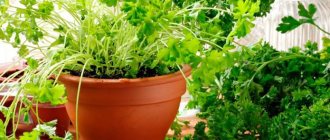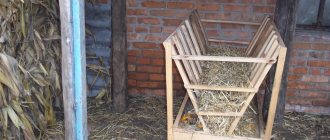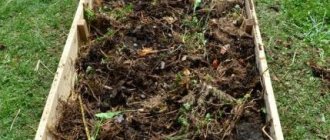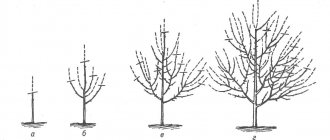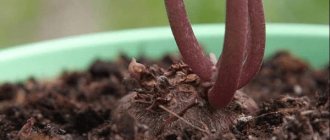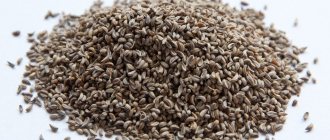Parsley varieties for growing on a windowsill
Growing parsley at home occurs under not entirely favorable conditions - insufficient humidity and low light. Therefore, not every planting material is suitable for growing parsley from seeds on a windowsill. Early ripening varieties are the most suitable.
Which parsley do you prefer, leaf or curly?
LeafyCurly
Breeders, taking into account the interest in vegetable gardens on windowsills, have developed a number of varieties that make it possible to successfully grow parsley on a windowsill:
| Leafy | “Morning freshness”, “Ordinary leaf”, “Gloria”, “Beads”, “Russian feast”, “Fitness”, “Prima”, “Emerald lace”, “Appetizing”, “Universal”, “Italian hero”. |
| Curly | “Astra”, “Fragrant Alley”, “Green Pearl”, “Vorozheya”, “Grandma’s Garden Bed”, “Curly Sue”, “Petra”, “Curly”. |
Helpful information
Daria Vorontsova
Amateur gardener. He is interested in growing various greens at home.
Curly parsley has a less pronounced taste and aroma, but, having an unusual foliage shape, is great for decorating salads and other dishes.
All of these varieties are united by early ripening, which allows you to use tasty and healthy fresh greens all year round.
Varieties
Of their old, time-tested varieties, you can pay attention to the variety
Sugar
The variety was included in the State Register of Breeding Achievements of the Russian Federation in 1950.
A root variety with a powerful and spreading leaf rosette, the number of leaves is from 25 to 45. The leaf length can reach 50 cm. High yield, from 30 to 60 kg per 10 sq.m.
The root vegetable is light gray on the outside, with white pulp and a yellow core, with a diameter of 4 to 7 cm, with excellent taste, a pointed shape, tapering at the bottom, weighing 40–70 g.
The variety is early ripening, from germination to use 75–100 days.
Cold resistant. The planting time in most regions is April.
Among the modern achievements of selection, the variety stands out
Italian giant
The variety was included in the State Register of Breeding Achievements of the Russian Federation in 2007.
Leaf variety. It lives up to its name and builds up powerful green mass. It forms a not too dense rosette, with only up to 25, but very large, leaves. You can pick it for greenery without waiting for full regrowth, so it is very quick to produce a harvest, although it belongs to mid-season varieties. From germination to complete growth of greenery 60–65 days. Productivity is about 30 kg per 10 sq.m. It is remarkable in that it can produce early greenery from roots that have overwintered in the soil much earlier than from seeds. The greens are fragrant, in good presentation. They are used fresh, frozen and dried for the winter. The variety is shade-tolerant.
Esmeralda
A variety of leaf curly (curly) parsley. The variety is mid-season. Forms stocky rosettes with dense leaves. After trimming some of the foliage, it is able to quickly grow new green mass. For such varieties it is quite productive, up to 15 kg per 10 sq.m. Use in the same way as regular leaf parsley. It decorates salads, side dishes and meat dishes very effectively.
Features of growing parsley on a window
When choosing a method for growing parsley on a windowsill, you should take into account that sowing seeds is a longer process, allowing you to get the first harvest 1.5-2 months after sowing. The advantage of this method is the ability to obtain fresh herbs for a long time.
Planting with root vegetables is an easier way. The harvest can be used much earlier. In addition, there is confidence in the variety of parsley, while when sowing seeds you can only rely on the inscription on the bag. The disadvantage is that the soil is quickly depleted and it becomes necessary to replace it or replant the plant in a new pot.
Helpful information
Daria Vorontsova
Amateur gardener. He is interested in growing various greens at home.
One of the prerequisites for growing parsley from seeds is thinning out the seedlings. The interval between them should be at least 3-4 cm. Root crops can be planted in a pot almost close to each other.
With any method, drying out of the soil is unacceptable. Excess water from the pan must be drained. After watering, to avoid the appearance of a dense crust, the soil should be loosened. It is recommended to cut off not the first sprouts that appear, but to wait until the plant has strengthened. If you want to grow parsley all year round, in summer in good weather you can move it to the balcony.
When to plant (sow) parsley seeds in open ground in spring
Before we move on to describing the planting processes, I want to tell you a little about the features of parsley. People often ask which parsley is better to plant – leaf or root. To do this, you need to answer this question yourself, namely, why are you planting it. Often planted for greenery. But the greens of parsley are different, smooth leaves cannot lie for a long time, they become limp, but, for example, curly leaves always keep their shape. It looks beautiful in a salad, but tastes a bit harsh.
Leaf parsley can be grown as seedlings; root parsley should not be planted this way, otherwise ugly roots will grow. The root foliage is smaller and drier. But it winters well and the next year produces very early greens that can be eaten. But if you think that you can tear off the foliage of the root and then dig up the root, then I will disappoint you, either the foliage or the root. Leafy ones are better in this regard; you can constantly cut off the greens little by little.
If you grow parsley for sale or storage, I recommend the Gloria variety; it reaches technical ripeness the fastest, stores well, but as a price, it has tough foliage. Another advantage of Gloria is the possibility of overwintering. In this case, next year you will have a very early harvest.
I personally recommend planting leaf parsley of the Biser variety. It has very tasty, tender greens, but, unfortunately, due to the delicate foliage, it does not lie well.
Or the Breeze variety. Soft, long-lasting foliage, but smaller in size.
In general, there are a lot of varieties. Look for the best one for yourself and plant it, but for now let’s talk about how to plant it.
Regardless of the type and variety of parsley, the general planting time is the same. To decide on the timing, let's find out what kind of plant it is, what it likes and what it doesn't. The plant is cold-resistant, light-loving and shade-tolerant. Seeds can germinate at temperatures from +3 degrees, and seedlings can withstand frosts down to -8 degrees. Recommended temperature for development is +12 degrees. The growing season until the technical ripeness of the green mass is 60-80 days, until the ripening of root crops is 110-140 days.
Grows well on loamy and sandy soils with acidity pH=6-7. It also grows on heavy soils, but it produces an ugly root crop. It does not tolerate stagnant water at all, so it is not planted in areas with high groundwater.
Parsley is usually grown in two ways:
- from seeds - to obtain leaves and roots, with the possibility of first obtaining seedlings
- from root crops - for forcing leaves, or obtaining the root crop itself
Planting seeds in the ground is carried out immediately after the snow cover melts, when the ground thaws and warms up by several degrees. Depending on the region, sowing occurs in April-May. You can always look up favorable days for sowing according to the lunar calendar using the calendar located on the side of the site. In 2021 these days will be as follows:
leaf parsley:
- February – 5-6, 8-10
- March – 8-10
- April – 5-6, 10-12
- May – 7-9
- June – 4-6
- July – 5-8
- August – 2-6, 31
- September – 1-3, 29-30
root parsley:
- March – 20-24
- April – 19, 22-24
- May – 19-21
- June – 17-18, 20-23
- July – 14-15, 18-20
Growing parsley from seeds
Step-by-step algorithm for growing from seeds:
- Wet the seeds and leave to germinate for several days;
- Place drainage at the bottom of the container;
- Pour the soil mixture on top and lightly moisten it;
- Make grooves in the ground no more than 0.5 centimeters deep;
- Sow seeds in the furrows and sprinkle with a small amount of soil;
- Moisten the soil with a spray bottle;
- Place the container in a warm place;
- Water regularly with warm water;
- Thin out the first shoots and place the container on the windowsill;
- Provide additional lighting;
- Start harvesting.
The process of growing from seeds is quite long. From sowing to harvest it takes about one and a half months. Another growing option is hydroponics. With this technology, the seeds are placed directly into a special substrate.
Sowing time
It is best to sow parsley in early spring immediately after the snow melts. In this case, you can get an early harvest and harvest it 2-3 times per season. The same results are obtained with winter sowing. In this case, the first greens are cut 2-4 weeks earlier than usual. When sowing in winter, the time is chosen so that the seeds do not have time to germinate before frost. The best time is when the temperature drops to -2–3 °C and the ground is covered with a crust of ice.
Is it possible to plant parsley in June?
Usually such a need does not arise, because parsley sown before winter or early spring will provide the gardener with greens for the entire season. But if for some reason it was not planted at the optimal time, then it can be done in the summer. At the same time, you need to be prepared for the fact that in hot, dry weather conditions the seedlings will be weak and will require additional care efforts:
- covering with light spunbond from drying out the soil,
- more frequent watering,
- loosening,
- weeding.
Moreover, it is better to sow parsley in summer in partial shade. You can also use the seedling method of growing.
Parsley planted in summer may require more frequent watering.
Growing parsley from roots
Step-by-step instructions for growing from root vegetables:
- Place drainage on the bottom of the container;
- Sprinkle soil mixture on top;
- Using scissors, trim off any existing greenery on root vegetables;
- Plant the roots in the ground so that they protrude slightly above the surface;
- Sprinkle water on the soil when planting;
- Place the pot on the windowsill;
- After three weeks, start harvesting.
Helpful information
Daria Vorontsova
Amateur gardener. He is interested in growing various greens at home.
The length of the rhizomes should not be too long - no more than 5 cm. The excess should be trimmed, not forgetting to leave the apical bud.
Harvest and storage
Root parsley is harvested in late September - early October. To do this, choose sunny and dry weather. The greens are cut, the roots are pulled out, the soil is shaken off and left to dry in the garden bed.
Then the crop is sorted, rotten and damaged roots are thrown away, healthy ones are put in boxes with their heads up and covered with sand. The optimal storage temperature is 0…+15°C.
The root can be stored in the refrigerator. The tops and tails are cut off, and the root vegetables are placed in perforated bags.
Leaf parsley is harvested throughout the growing season:
- the tops are cut off, the inner foliage is left so as not to retard further growth;
- For cutting, select stems on which all three leaves have matured.
Parsley can be stored in the freezer, pickled in jars and dried.
Fresh greens are stored for 12-15 days in the refrigerator at a temperature of 0...+5°C.
Plant care
Simple rules for caring for the plant will help you grow a bountiful harvest. First of all, these include watering and fertilizing.
Watering
The plant will produce abundant aromatic greens when the soil is moist. When watering, water must penetrate the entire depth of the soil layer. Residues will end up on a tray placed under the pot. On sunny days, watering should be done in the morning or evening, when the heat subsides.
Measures should be taken - if there is too much water, the roots will begin to rot, and if there is not enough water, the foliage will turn yellow.
Before the first shoots appear, spraying should be used so as not to wash away the top layer with the seeds in it. Use settled water at room temperature for irrigation. Watering frequency is 2-3 days.
Top dressing
When planting, fertilizers are added to the soil mixture. If the leaves become yellow and weakened, this indicates that there are not enough nutrients. The mineral complex should be added after cutting the leaves.
- After applying fertilizer, you should not cut off the leaves for consumption for a couple of weeks.
You can feed them with fertilizers made up yourself from nitrogen, potassium and phosphorus, or buy a ready-made product, for example, “Growth”.
Planting parsley
To obtain thick, healthy greens, it is important to observe the timing of sowing parsley and carry out agrotechnical measures on time.
When to plant parsley?
Parsley is planted as soon as the ground warms up a little from the sun, in April. But you can plant it in winter. To achieve this, planting work should be carried out in October.
It’s good if tomatoes, cucumbers, potatoes or pumpkins grew in the garden before the parsley. The predecessors of the umbrella family are not recommended, although the plant gets along well next to them.
The site for spring planting should begin to be prepared in the fall. Clear the area of weeds and plant debris and treat with a fungicidal compound if necessary. While digging the soil, apply fertilizer. This can be either mineral or organic fertilizers. For example, saltpeter (1 tablespoon per 1 sq. m), wood ash (350 g/sq. m), humus, manure and slurry (3 kg per 1 sq. m).
In this case, organic matter has an advantage, because over the winter, during the decomposition process, microelements and substances will gradually begin to be released and accumulate. The necessary nutrition will already be in the soil in the spring and its effect is longer than that of the mineral one.
If it was not possible to prepare the site in the fall, then this must be done in early spring in order to have time to complete the work 2 weeks before the expected planting date. At this time, use humus and ash to improve the quality of the soil. They will make it loose and increase the quality of the composition.
Favorable growing conditions
With optimally selected and provided conditions for parsley, it will delight you with thick, healthy and tasty greens. These conditions include:
- Suitable soil. The plant prefers loose, light, fertile and non-acidified soil.
- Sufficient amount of solar heat and light. Parsley does not tolerate shade, the plant becomes frail and stretches out in search of light.
- Agrotechnical measures. Provide timely moderate watering, loosening the soil, and weeding.
How to plant parsley?
In the prepared area, make grooves up to 1.5 cm deep. Leave the distance between the rows 35-50 cm. This will make it convenient to care for the plants and the bushes will not touch each other’s leaves and create shade.
When sowing seeds in furrows, leave a gap of 1.5-2 cm between them. The standard sowing rate is 1 g of seeds per 1 square meter. m area. Cover the completed rows with soil. Water the area.
When planting in autumn, there is no need to water the soil additionally.
To provide yourself with fresh herbs for the whole season, plant parsley in stages, sowing the seeds every week.
Watch the video on how to plant parsley in a prepared area:
Diseases and pests
Improper care can cause plants to be damaged by fungal diseases. These include powdery mildew and white spot. Treatment with the biological product “Fitosporin” will help to cope with them. The main pest of parsley is aphids. At the first sign of its appearance, the leaves should be sprayed with Fitoverm. After treatment, parsley leaves should not be eaten for the period indicated on the product packaging.
Powdery mildew
Aphid
Fitosporin
Fitoverm
In the future, watering, temperature and other conditions should be adjusted.
Varieties: root and leaf ordinary
There are two types of parsley: root and leaf . Outwardly, it may seem that there is no difference between them - both types have bright green leaves. But in root parsley they are harsher and sharper in taste (such greens need to be cooked), while in leaf parsley the greens have a mild spicy taste, the structure of the leaves is light (it is good to use in salads, fresh). And there is no need to talk about the edible roots of leaf parsley - they are not used for food due to their branching and small thickness.
Root parsley is picky about soil. The planting bed should be made on loose, deeply dug soil, into which rotted manure has been added (make no mistake, parsley does not like fresh manure). On clay soils with a lot of pests, root parsley will not yield root crops - the roots will have many thin legs of a dirty brown color. Although there will be a green mass (up to 40 pieces) in the rosette of root parsley, it is advisable not to tear off its leaves, otherwise the roots will turn out small and thin.
But after harvesting, the greens should not be ignored - its middle part of the rosette can be finely chopped and used either for drying, freezing, or for home canning vegetables as a seasoning. Leaf parsley also loves fertile, loose soil . It grows poorly in the shade - it forms a frail bush with a small amount of leaf mass, although ideally the number of leaves in a rosette of such parsley is at least 80 pieces.
We invite you to watch a video about the varieties of parsley:
Growing in a greenhouse
To rationally use plant heating, it is worth using racks or tiers. Important:
- complete the pre-germination procedure;
- sow to a depth of 1 cm with a distance of 0.3 m;
- perform regular thinning of seedlings;
- observe proper watering;
- enrich seedlings with minerals and fertilizers twice during the growing season.
Advice! The optimal temperature in the greenhouse is 18 degrees.
